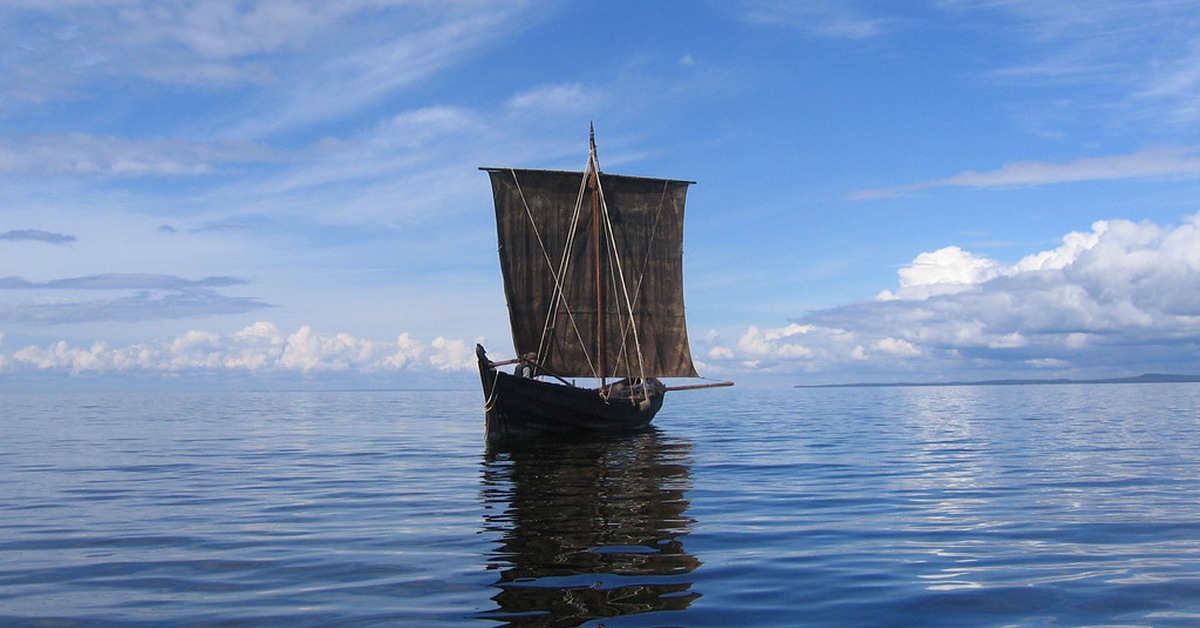It has been long known that Nordic peoples landed on the American continent before the 15th century. Now, we have evidence that their accomplishment was known throughout Europe.

After exploring and colonizing Iceland and Greenland on the northwest coast of the Atlantic, the Vikings appear to have gone on to reach the shores of today’s Canada and the United States.
What is more, their feat seems to have been known throughout Europe, as a document dating to 1340, now studied in detail, has revealed. In the manuscript, a monk from Milan describes the islands of Marckalada (Markland, present-day Newfoundland and Labrador) based on the stories of Genoese sailors.

The manuscript was examined by Paolo Chiesa, professor of medieval Latin literature at the University of Milan. The book originally belonged to the city’s collection of the Basilica of Sant’Ambrogio, and then disappeared after being liquidated after the Napoleonic conquests. It is currently in New York in a private collection.
Chiesa and her student managed to obtain the book for research (find their study here) in which they found the passage about the Vikings while translating the Latin text.
In it Galvano describes that, in the words of Danish and Norwegian sailors, there is a world beyond Greenland, called Markland, where giants live:
“Sailors, who often sail the seas of Denmark and Norway, say Iceland is far north beyond Norway. From there, Greenland lies even further away, where the North Star disappears behind humans’ backs. The head of the island is the bishop. There is no grain, no wine, no fruit in this land; people live on milk, meat and fish. They live in underground houses and do not dare to make much noise to avoid beasts finding and attacking them. Huge white bears live there, swimming in the sea and dragging the shipwrecked ashore. Huge eagles also live here, which are sent to Emperor Katai. Further west is another land, Markland, where the giants live; there are buildings on this earth made of stone slabs that man could not build, just a giant. The trees are green, there are animals, a large percentage of them are birds. At the same time, no sailor knew for sure the land or its features.”

The land referred to by the Italian monk as “a terra que dicitur Marckalada”, a land called Markland, is mentioned by some Icelandic sources and identified by scholars as some part of the Atlantic coast of North America. Galvano Fiamma’s reference, probably derived by oral sources heard in Genoa, is the first mention of the American continent in the Mediterranean region, and gives evidence of the circulation (out of the Nordic area and 150 years before Columbus) of narratives about lands beyond Greenland.
That said, Galvano’s manuscript is not the first evidence of the Vikings reaching the American continent. In 1960, Norwegian researcher Helge Ingstad and his wife, archaeologist Anne Stine Ingstad, found the remains of a Viking village at the northernmost tip of Newfoundland – well, yes, that’s America. And, in fact, the only authenticated Norse settlement in North America!

In fact, the Norse settlements on the North American island of Greenland lasted for almost 500 years. But then, L’Anse aux Meadows, the only confirmed Norse site in present-day Canada, was small and did not last that long.
Nevertheless, this is an astounding example of the Vikings gaining a foothold on the North American continent, even if it didn’t last too long.

Being 150 years ahead (or even more?) of Columbus sounds cool, doesn’t it?
Vikings were definitely awesome.
Sources: 1, 2, 3, 4
